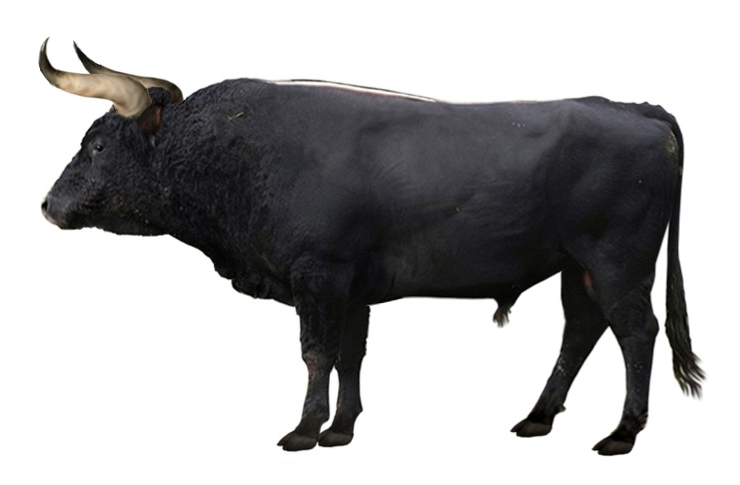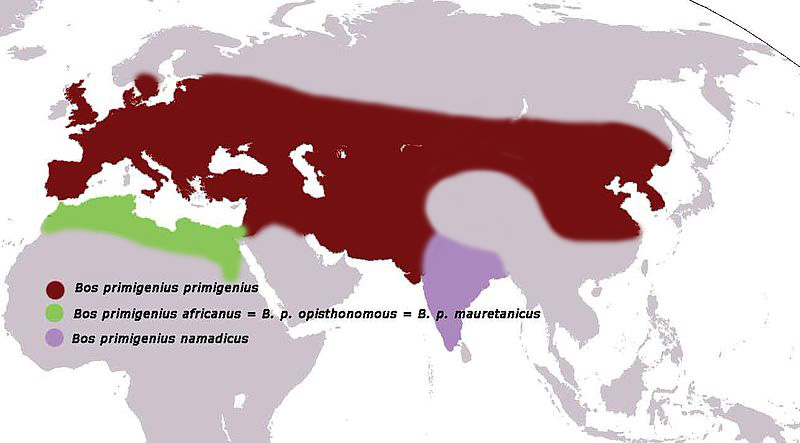Uruz Project on:
[Wikipedia]
[Google]
[Amazon]
 The Uruz Project had the goal of
The Uruz Project had the goal of
 Ecological restoration projects cannot be complete without bringing back those key elements that help shape and reshape wild landscapes. The European aurochs (''Bos p. primigenius'') was a large and long-horned wild bovine
Ecological restoration projects cannot be complete without bringing back those key elements that help shape and reshape wild landscapes. The European aurochs (''Bos p. primigenius'') was a large and long-horned wild bovine  The aurochs is one of the
The aurochs is one of the
Aurochs
at the True Nature Foundation
Long Now Foundation
* {{Facebook, truenaturefoundation Nature conservation organisations based in Europe Animal breeding Mammal conservation
 The Uruz Project had the goal of
The Uruz Project had the goal of breeding back
Breeding back is a form of artificial selection by the deliberate selective breeding of domestic (but not exclusively) animals, in an attempt to achieve an animal breed with a phenotype that resembles a wild type ancestor, usually one that has g ...
the extinct aurochs
The aurochs (''Bos primigenius'') ( or ) is an extinct cattle species, considered to be the wild ancestor of modern domestic cattle. With a shoulder height of up to in bulls and in cows, it was one of the largest herbivores in the Holocen ...
(''Bos p. primigenius''). Uruz is the old Germanic word for aurochs. The Uruz Project was initiated in 2013 by the True Nature Foundation and presented at TEDx DeExtinction, a day-long conference organised by the Long Now Foundation with the support of TED
TED may refer to:
Economics and finance
* TED spread between U.S. Treasuries and Eurodollar
Education
* ''Türk Eğitim Derneği'', the Turkish Education Association
** TED Ankara College Foundation Schools, Turkey
** Transvaal Education Depa ...
and in partnership with National Geographic Society
The National Geographic Society (NGS), headquartered in Washington, D.C., United States, is one of the largest non-profit scientific and educational organizations in the world.
Founded in 1888, its interests include geography, archaeology, and ...
, to showcase the prospects of bringing extinct species back to life. The de-extinction movement itself is spearheaded by the Long Now Foundation.
Technically, ''Bos primigenius'' is not wholly extinct. The wild subspecies ''B. p. primigenius'', ''indicus'' and ''africanus'' are, but the species is still represented by domestic cattle. Most, or all, of the relevant Aurochs characteristics, and therefore the underlying DNA, needed to "breed back" an aurochs-like cattle type can be found in ''B. p. taurus''. Domestic cattle originated in the middle east, and there also has been introgression
Introgression, also known as introgressive hybridization, in genetics is the transfer of genetic material from one species into the gene pool of another by the repeated backcrossing of an interspecific hybrid with one of its parent species. Intr ...
of European aurochs into domestic cattle in ancient times. The Uruz Project's goal is to collect all relevant data and reunite scattered aurochs characteristics, and thus DNA, in one animal.
Background
 Ecological restoration projects cannot be complete without bringing back those key elements that help shape and reshape wild landscapes. The European aurochs (''Bos p. primigenius'') was a large and long-horned wild bovine
Ecological restoration projects cannot be complete without bringing back those key elements that help shape and reshape wild landscapes. The European aurochs (''Bos p. primigenius'') was a large and long-horned wild bovine herbivore
A herbivore is an animal anatomically and physiologically adapted to eating plant material, for example foliage or marine algae, for the main component of its diet. As a result of their plant diet, herbivorous animals typically have mouthpart ...
that existed from the most western tip of Europe
Europe is a large peninsula conventionally considered a continent in its own right because of its great physical size and the weight of its history and traditions. Europe is also considered a Continent#Subcontinents, subcontinent of Eurasia ...
until Siberia
Siberia ( ; rus, Сибирь, r=Sibir', p=sʲɪˈbʲirʲ, a=Ru-Сибирь.ogg) is an extensive geographical region, constituting all of North Asia, from the Ural Mountains in the west to the Pacific Ocean in the east. It has been a part of ...
in present-day Russia
Russia (, , ), or the Russian Federation, is a List of transcontinental countries, transcontinental country spanning Eastern Europe and North Asia, Northern Asia. It is the List of countries and dependencies by area, largest country in the ...
. Aurochs have played a major role in human history
Human history, also called world history, is the narrative of humanity's past. It is understood and studied through anthropology, archaeology, genetics, and linguistics. Since the invention of writing, human history has been studied throug ...
. They are often depicted in rock-art, including the famous, well-conserved cave paintings made by Cro-Magnon
Early European modern humans (EEMH), or Cro-Magnons, were the first early modern humans (''Homo sapiens'') to settle in Europe, migrating from Western Asia, continuously occupying the continent possibly from as early as 56,800 years ago. They ...
people in the Lascaux Caves
Lascaux ( , ; french: Grotte de Lascaux , "Lascaux Cave") is a network of caves near the village of Montignac, Dordogne, Montignac, in the Departments of France, department of Dordogne in southwestern France. Over 600 Parietal art, parietal ca ...
, estimated to be 17,300 years old. Aurochs and other large animals portrayed in Paleolithic
The Paleolithic or Palaeolithic (), also called the Old Stone Age (from Greek: παλαιός ''palaios'', "old" and λίθος ''lithos'', "stone"), is a period in human prehistory that is distinguished by the original development of stone too ...
cave art were often hunted for food. Hunting
Hunting is the human activity, human practice of seeking, pursuing, capturing, or killing wildlife or feral animals. The most common reasons for humans to hunt are to harvest food (i.e. meat) and useful animal products (fur/hide (skin), hide, ...
and habitat loss
Habitat destruction (also termed habitat loss and habitat reduction) is the process by which a natural habitat becomes incapable of supporting its native species. The organisms that previously inhabited the site are displaced or dead, thereby ...
caused by humans
Humans (''Homo sapiens'') are the most abundant and widespread species of primate, characterized by bipedalism and exceptional cognitive skills due to a large and complex brain. This has enabled the development of advanced tools, culture, ...
, including agricultural
Agriculture or farming is the practice of cultivating Plant, plants and livestock. Agriculture was the key development in the rise of Sedentism, sedentary human civilization, whereby farming of Domestication, domesticated species created food ...
land conversion, caused the aurochs to go extinct in 1627, when the last individual, a female, died in Poland
Poland, officially the Republic of Poland, is a country in Central Europe. It is divided into 16 administrative provinces called voivodeships, covering an area of . Poland has a population of over 38 million and is the fifth-most populous ...
’s Jaktorów
Jaktorów is a village in Grodzisk Mazowiecki County, Masovian Voivodeship, in east-central Poland. It is the seat of the gmina (administrative district) called Gmina Jaktorów. It lies approximately west of Grodzisk Mazowiecki and southwest o ...
Forest.
 The aurochs is one of the
The aurochs is one of the keystone species
A keystone species is a species which has a disproportionately large effect on its natural environment relative to its abundance, a concept introduced in 1969 by the zoologist Robert T. Paine. Keystone species play a critical role in maintaini ...
that is missing in Europe. Their grazing
In agriculture, grazing is a method of animal husbandry whereby domestic livestock are allowed outdoors to roam around and consume wild vegetations in order to convert the otherwise indigestible (by human gut) cellulose within grass and other ...
and browsing patterns, trampling of the soil and faeces had a profound impact on the vegetation
Vegetation is an assemblage of plant species and the ground cover they provide. It is a general term, without specific reference to particular taxa, life forms, structure, spatial extent, or any other specific botanical or geographic character ...
and landscapes it inhabited. Grazing results in a greater variety of plant species, structures and ecological niches
In ecology, a niche is the match of a species to a specific environmental condition.
Three variants of ecological niche are described by
It describes how an organism or population responds to the distribution of resources and competitors (for ...
in a landscape that benefit both biodiversity
Biodiversity or biological diversity is the variety and variability of life on Earth. Biodiversity is a measure of variation at the genetic (''genetic variability''), species (''species diversity''), and ecosystem (''ecosystem diversity'') l ...
and production
Production may refer to:
Economics and business
* Production (economics)
* Production, the act of manufacturing goods
* Production, in the outline of industrial organization, the act of making products (goods and services)
* Production as a stati ...
. Megaherbivores like the aurochs also controlled vegetation
Vegetation is an assemblage of plant species and the ground cover they provide. It is a general term, without specific reference to particular taxa, life forms, structure, spatial extent, or any other specific botanical or geographic character ...
development.
Breeding strategy
The Uruz Project aims to breed an aurochs-like breed of cattle from a limited number of carefully selected primitive cattle breeds with known Aurochs characteristics. The project usesSayaguesa cattle
The Sayaguesa is an endangered Spanish breed of domestic cattle. It is named for the comarca of Sayago in the province of Zamora, in the western part of the autonomous community of Castile and León, and is raised almost exclusively in that ...
, Maremmana primitiva or Hungarian grey cattle
The Hungarian Grey ( hu, Magyar Szürke, italic=no), also known as the Hungarian Grey Steppe, is a Hungarian breed of beef cattle. It belongs to the group of Podolic cattle and is characterised by long lyre-shaped horns and a pale grey coat. I ...
, Chianina
The Chianina () is an Italian breed of large white cattle. It was formerly principally a draught breed; it is now raised mainly for beef. It is the largest and one of the oldest cattle breeds in the world. The ''bistecca alla fiorentina'' is ...
and Watusi. The genome of the Aurochs has been completely reconstructed and serves as the baseline for the reconstruction of the Aurochs.
See also
*Breeding back
Breeding back is a form of artificial selection by the deliberate selective breeding of domestic (but not exclusively) animals, in an attempt to achieve an animal breed with a phenotype that resembles a wild type ancestor, usually one that has g ...
* De-extinction
* Breeding of aurochs-like cattle
References
External links
Aurochs
at the True Nature Foundation
Long Now Foundation
* {{Facebook, truenaturefoundation Nature conservation organisations based in Europe Animal breeding Mammal conservation